How Technology Review got its start
Tech Review has graced coffee tables of MIT alumni for 125 years. Here’s how it all began—and how the fledgling magazine helped rally alumni to oppose a merger with Harvard.
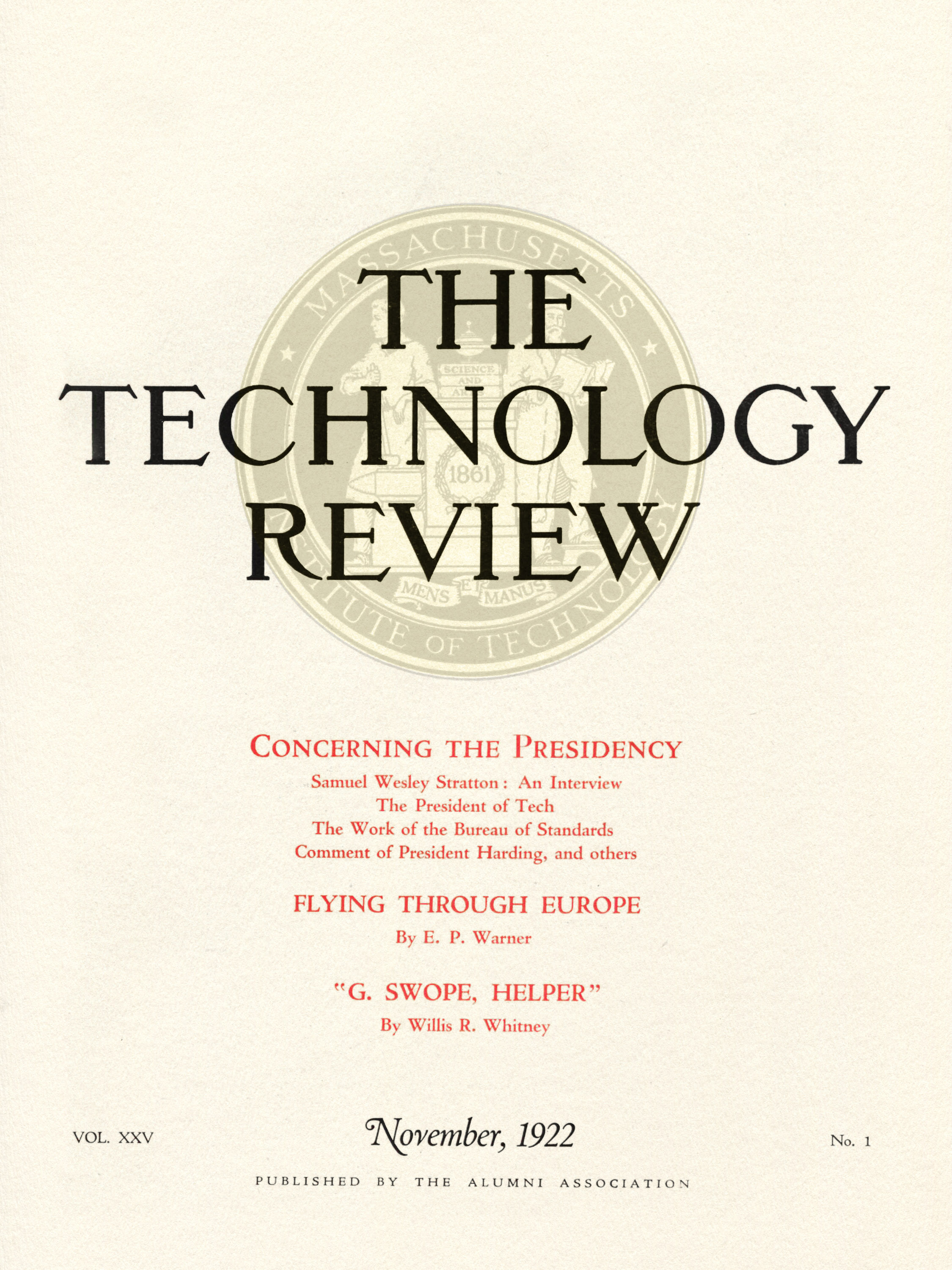
The name MIT Technology Review conveys a straightforward promise: that the magazine offers a review of the world’s technologies and is published by MIT. But when it was founded in 1899, The Technology Review, as it was first titled, didn’t focus on the application of scientific knowledge to practical purposes. It was a magazine about MIT itself—or “Technology,” as its earliest alumni fondly called it.
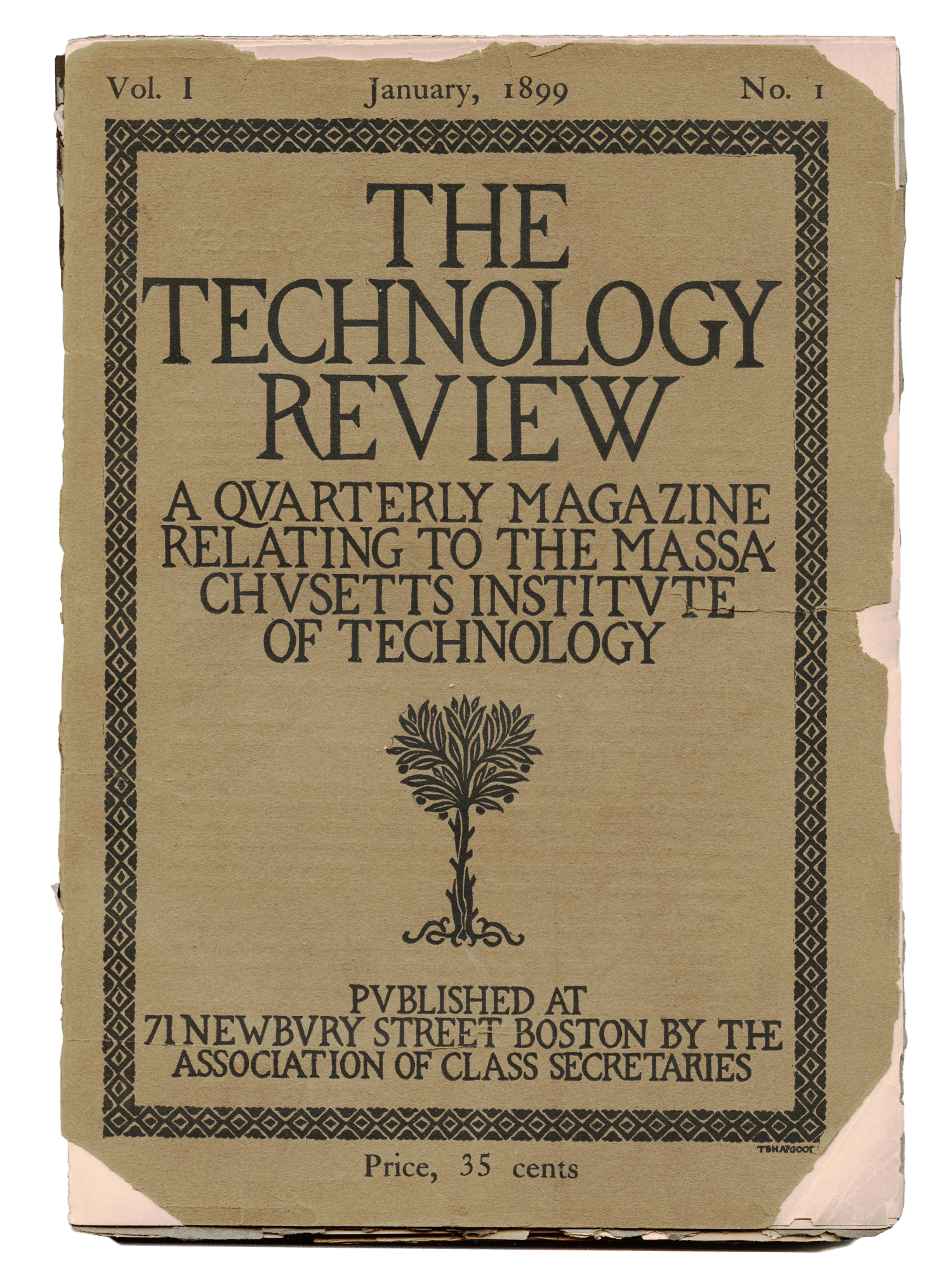
MIT’s first cohort of 15 students started classes on February 20, 1865, four years after Massachusetts granted the Institute’s charter and just months before the end of the US Civil War. Fourteen students graduated in the spring of 1866, and that fall, enrollment jumped to 70.
The new school caught the wave of the nation’s increasingly rapid industrialization. Francis Amasa Walker, who served as MIT’s president from 1881 to 1897, had kept the Institute focused on the practice of engineering, hiring working engineers as lecturers and encouraging professors to consult to industry. When companies across the country looked to hire engineers, Technology’s graduates were in high demand. As alumni ventured far and wide to begin their careers, they created MIT clubs in Chicago, Denver, New York, the Connecticut Valley, Philadelphia, Pittsburgh, and western New York.
Technology’s growing alumni body formally created the MIT Alumni Association in 1875 with the mission “to further the well-being of the Institute and its graduates by increasing the interest of members in the school and in each other.” But much of the work of keeping track of alumni was left to the individual class secretaries. This was no small task, and upon gathering informally on November 4, 1896, at the MIT Technology Club on Newbury Street, a group of them created their own distinct organization, the Association of Class Secretaries. Their objective was a mix of cheerleading and record keeping: “to promote class spirit and the welfare of the Institute and to systematize all matter pertaining to class organization and record.”
On February 1, 1897, at one of the first meetings of the new association, Arthur D. Little, Class of 1885, proposed the idea of launching an alumni magazine. The Institute by then had nearly 2,000 graduates and almost as many former students who had not completed their courses of study but still felt kinship to Technology. Many wanted some way to keep in touch with each other and to stay abreast of Institute news. The College of Wooster in Ohio had begun publishing its Alumni Bulletin in 1886, and Yale had founded its own alumni magazine in 1891. Little believed that Technology’s former students would welcome a periodic review of news from the Institute and its graduates.
Little’s fellow secretaries appointed him, along with James P. Munroe, Class of 1882, and Professor C. Frank Allen, Class of 1872, to the Committee on Proposed Publication to explore the possibility. On March 22, 1897, the committee presented its two-page report to Walter B. Snow, Class of 1882, who served as secretary (and thus leader) of the Association of Class Secretaries.
“It is the feeling of the Committee that the time is ripe for such a publication, addressed primarily to former students of the Institute and having for its object the presentation and discussion of matters relating to the welfare of the Institute,” the report began.
The committee recommended modeling the magazine on the Harvard Graduates’ Magazine and publishing four issues annually of about 100 pages each. The print run for the first edition should be large enough “to permit the sending of one copy to every man formerly connected with the school who can be reached.” Issues would be priced at 35 cents each, or one dollar per year. (It’s not surprising that the report failed to mention alumnae. Ellen Swallow Richards had earned her bachelor of science degree in 1873, but by 1890, only 19 of the more than 100 women who had enrolled as students had graduated from MIT.)
On the basis of Harvard’s experience, the committee thought that no more than a third of the alumni would subscribe. Its report recommended seeking paid advertising to make up the difference, with “advertising solicitors” selling ad pages at $35 each and receiving commissions “as high as 30-40 per cent.” The per-issue cost to produce the magazine was expected to be $221.48. The price climbed, however, when the committee discovered that it could not find a volunteer editor who would commit “the very large amount of time which the publication will certainly demand.” So the committee noted it had decided “to employ a working editor who should be paid a salary of say $500.00 a year”—about half that of an engineer, or on par with what a butcher or bartender might be paid—“and whose business it would be to carry out the policy of the managing board and attend to the details of the actual work of publication.”
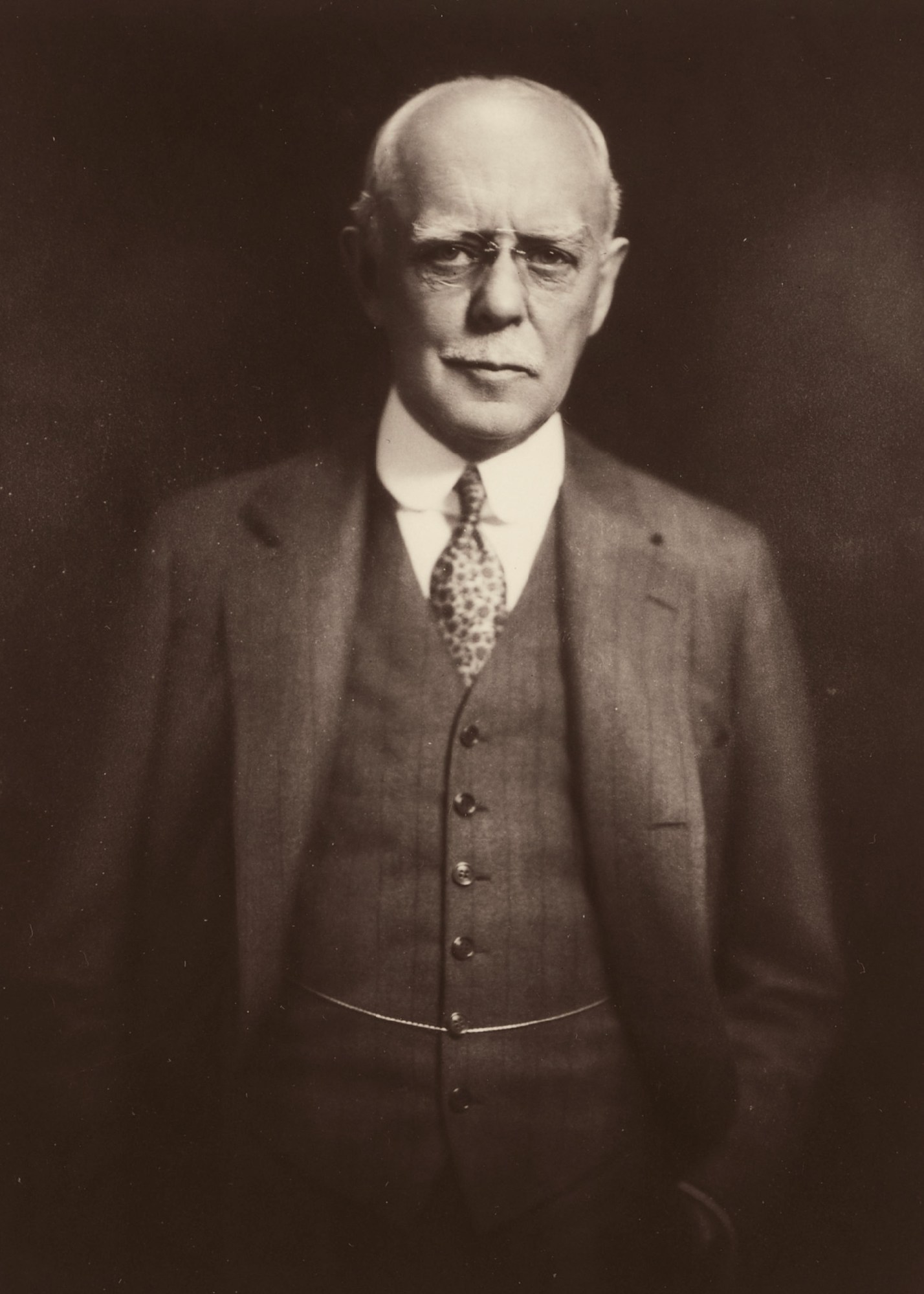
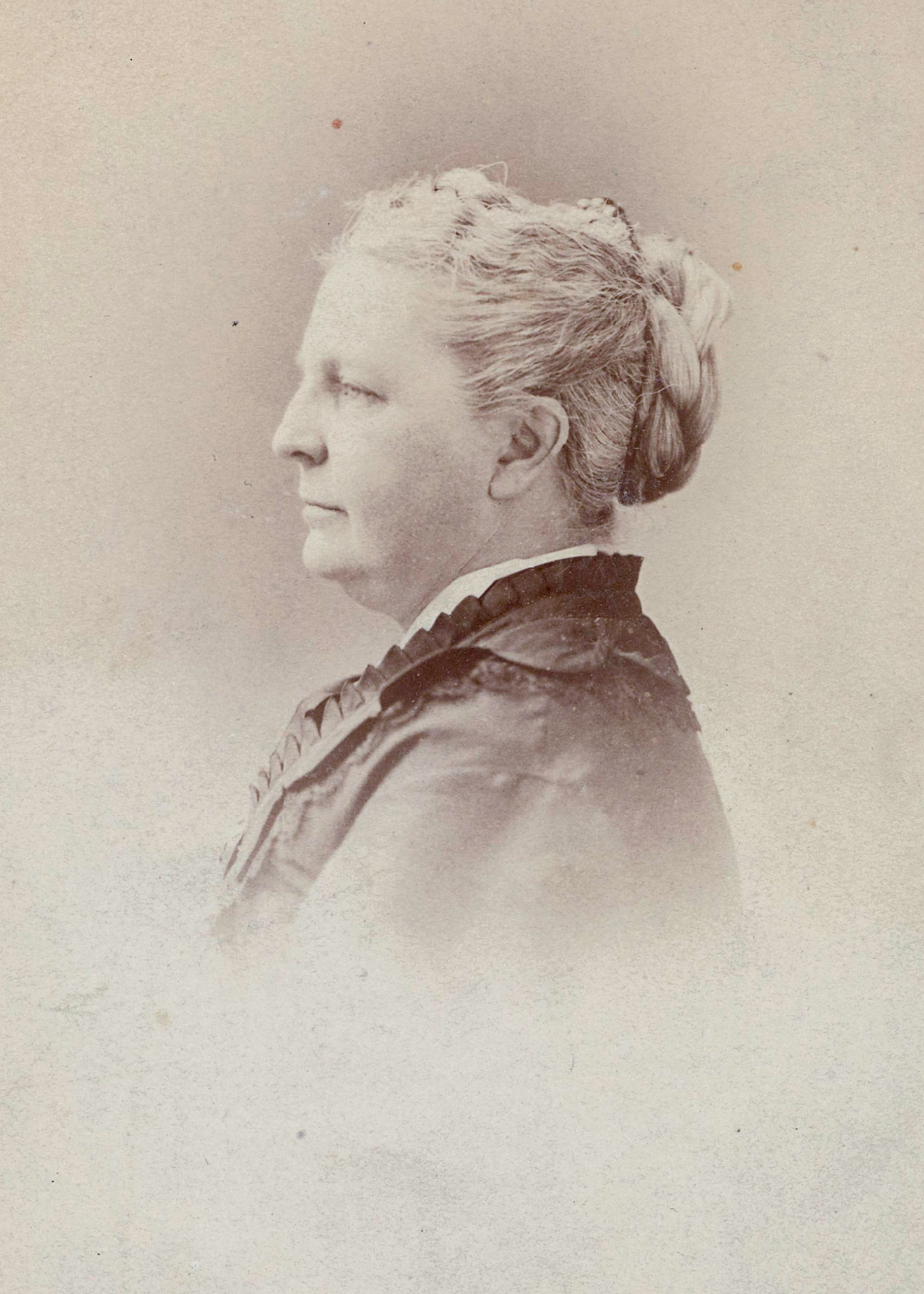
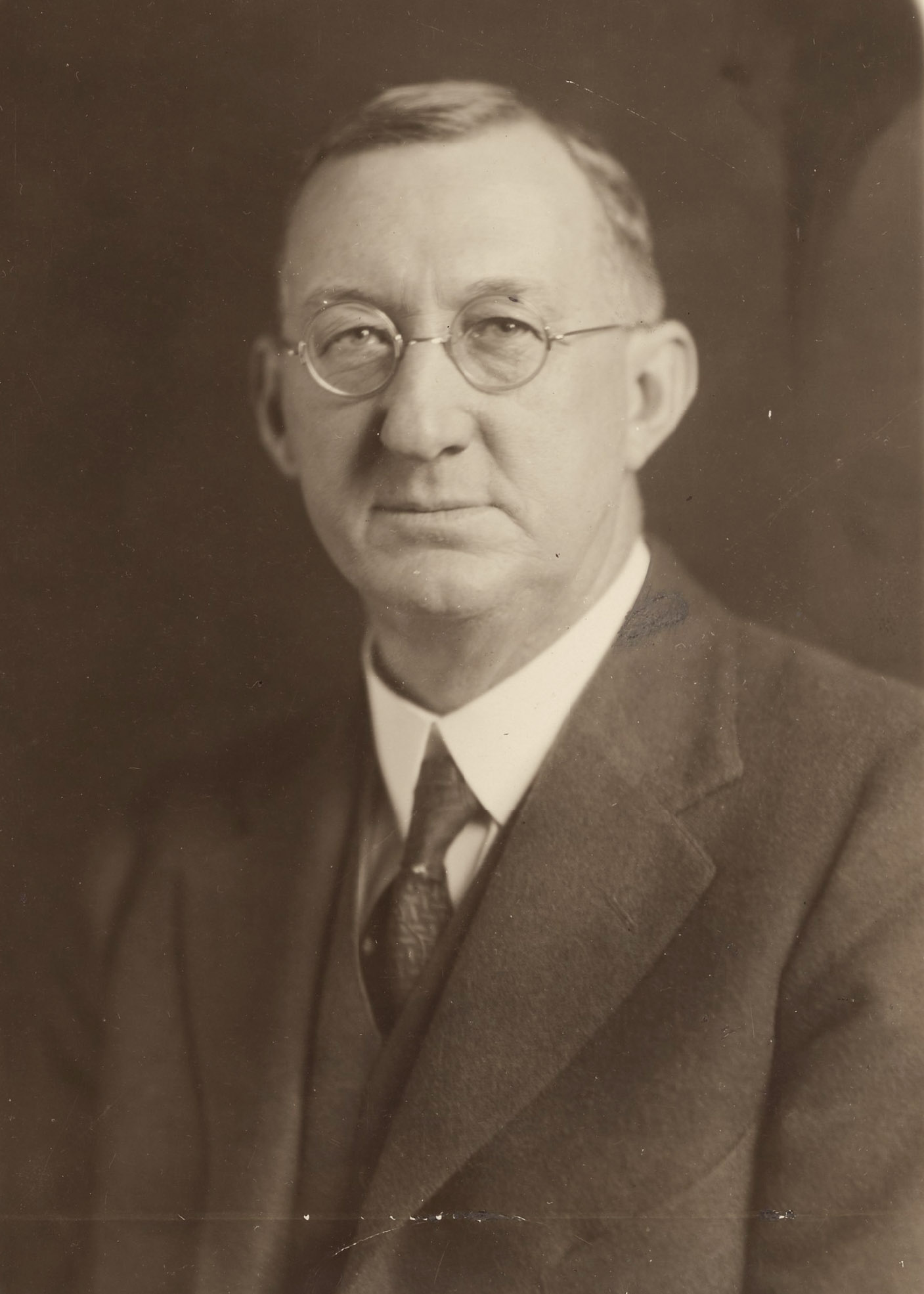
Arthur D. Little (left), Class of 1885, proposed the idea of launching an alumni magazine for MIT. Emma Savage Rogers (center), wife of MIT’s founder, made a gift of $500 to help fund the endeavor, and Arthur T. Hopkins (right), Class of 1897, was named editor.
Emma Rogers, wife of MIT’s founder, William Barton Rogers, made a gift of $500 to help fund the endeavor. An additional loan of $500 was secured. Arthur T. Hopkins, Class of 1897, was named the editor.
Over the following year, Hopkins and the publication committee solicited articles from alumni and faculty, as well as information about the publications of MIT faculty. Class secretaries provided news of MIT graduates as well as a list of deceased alumni, which would be published as a “necrology.”
Volume I, Number 1, dated January 1899, was back from the printer and ready to be distributed before the end of 1898. It began with an essay on the publication’s raison d’être, noting:
“The scattered news, the isolated suggestions and criticisms, the wide-spread evidences of the soundness of Institute teaching, will here be gathered, and in orderly form put upon permanent record. The Corporation, the Faculty, the graduate, the ‘special,’ the undergraduate, will in these pages learn more of one another, check each the other’s work, and realize better what all must do to serve the high ends of the Massachusetts Institute of Technology.” (For more on this essay, see the January/February 2024 issue of MIT Technology Review.)
The local press reviewed the debut favorably. “It is an attractive publication, both typographically and in the quality of the reading matter inside its covers,” reported the Boston Evening Transcript on December 31, 1898.
“Its quarterly appearance lends both tone and dignity to the thriving Boston institute of which it is the official organ, and its corps of editors is a guaranty of much solid, intellectual worth in coming numbers,” wrote the Boston Globe in January 1899, apparently failing to realize that The Technology Review was produced by alumni, not by the Institute itself.
“M.I.T.’s members, past and present and future, will reflect credit upon themselves by earnest supporting so creditable an output, and to all outward appearances generous support, in advertising even, is being given,” the Globe’s article continued. “A good platinum print of Pres. James M. Crafts makes a fitting frontispiece to this number of the quarterly.”
Coverage extended beyond Boston, with such publications as the New York Times, the Detroit Free Press, the Transcript-Telegram of Holyoke, Massachusetts, the Brooklyn Daily Eagle, and even London’s Book World also heralding its launch. The Houston Post noted that among the first issue’s articles was a biographical sketch of President Crafts, a 22-page paper called “The Function of the Laboratory,” and a description of the Institute’s newly constructed Pierce Building on Trinity Place in Boston by its architect, Professor Eleazar B. Homer, Class of 1885. Demonstrating a love for technical detail that would become a hallmark of the publication, the issue included photos and floor plans for the building’s basement and five floors, showing the location of the lecture halls, the library, and the all-important laboratories—a distinguishing feature at a time when few universities had such practical accommodations.
Hopkins resigned as editor after the third issue, becoming superintendent of the Boston Almshouse and Hospital at Long Island. Walter Humphreys, Class of 1897, took over. (Humphreys would go on to become an instructor in mechanisms at the Institute, MIT’s registrar, and eventually the secretary of the Corporation and a lifetime member.)
As promised, the publication committee produced four issues for Volume I (January, April, July, and October). These totaled 512 pages—far exceeding the plan. That December, the committee met to consider the future. Though the magazine was popular with alumni, faculty, and students, financially it was in trouble. It faced a deficit of $1,050 (roughly $40,000 in 2023 dollars), including $850.22 in unpaid bills.
“Increased subscriptions and advertisements were absolutely required for the continuance of the publication,” noted Snow in his letter to the Association of Class Secretaries in December 1899. The publication committee also set about cutting costs. Humphreys’s contract was canceled—he continued on as a volunteer—and Munroe took his place, receiving a significantly lower salary as “clerk.” The publication switched to a cheaper printer and planned to publish no more than 400 pages in Volume II. Snow wrote that they also resolved to send “cleaner” copy to the printer, with “more careful attention to details,” which presumably would result in fewer corrections to the typeset pages before they were printed.
Volume II brought in $942.40 in subscriptions and $1,527 in advertising—enough to repay much of the original $500 borrowed to create the publication, according to Snow’s report of the publication committee’s meeting in 1900. The magazine also received a personal gift of $100 from outgoing committee chairman Little, who had to resign his position in light of his “rapidly increasing professional duties.” (Little’s eponymous company was on its way to becoming an international chemicals and management consulting firm.)
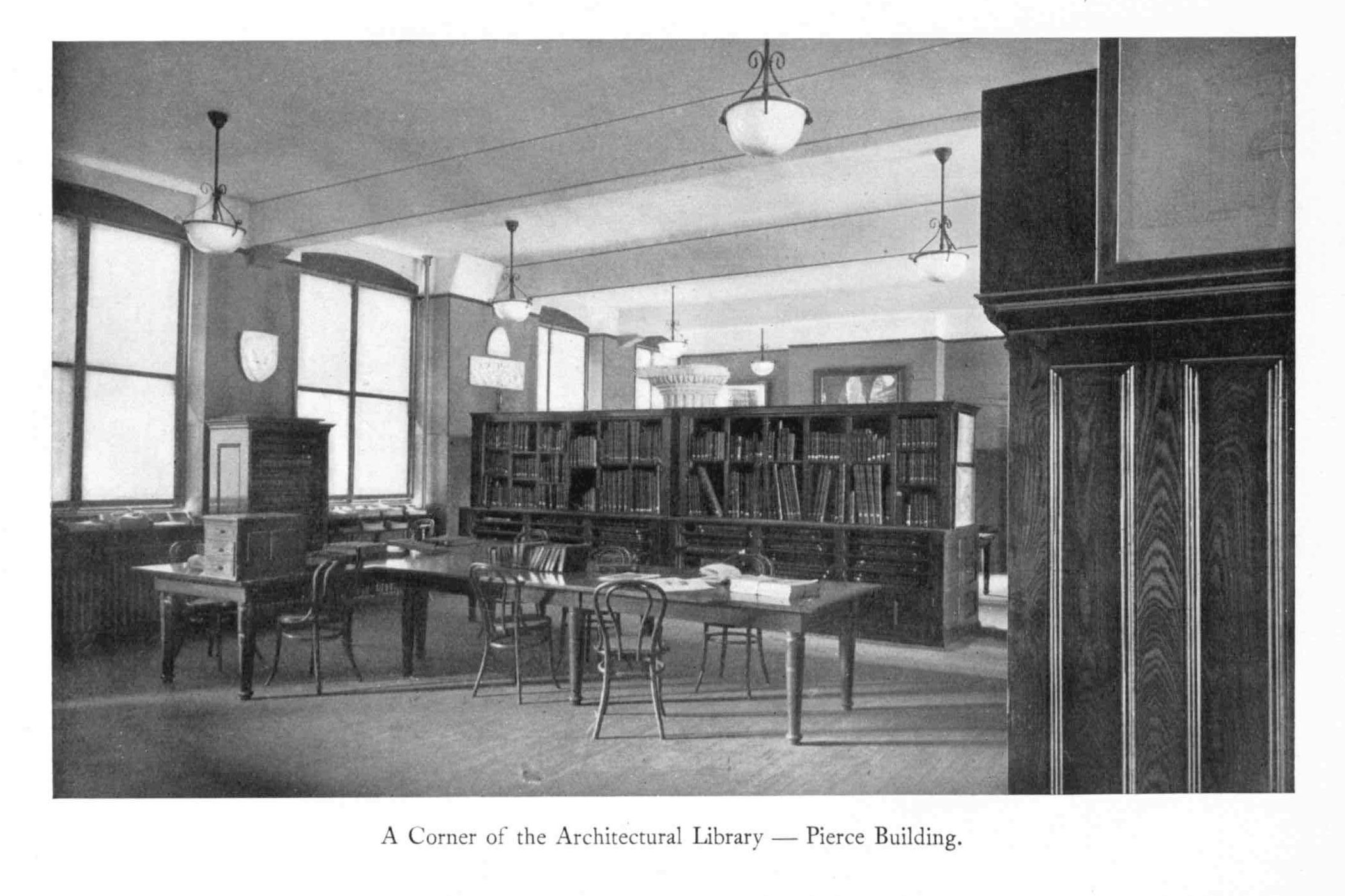
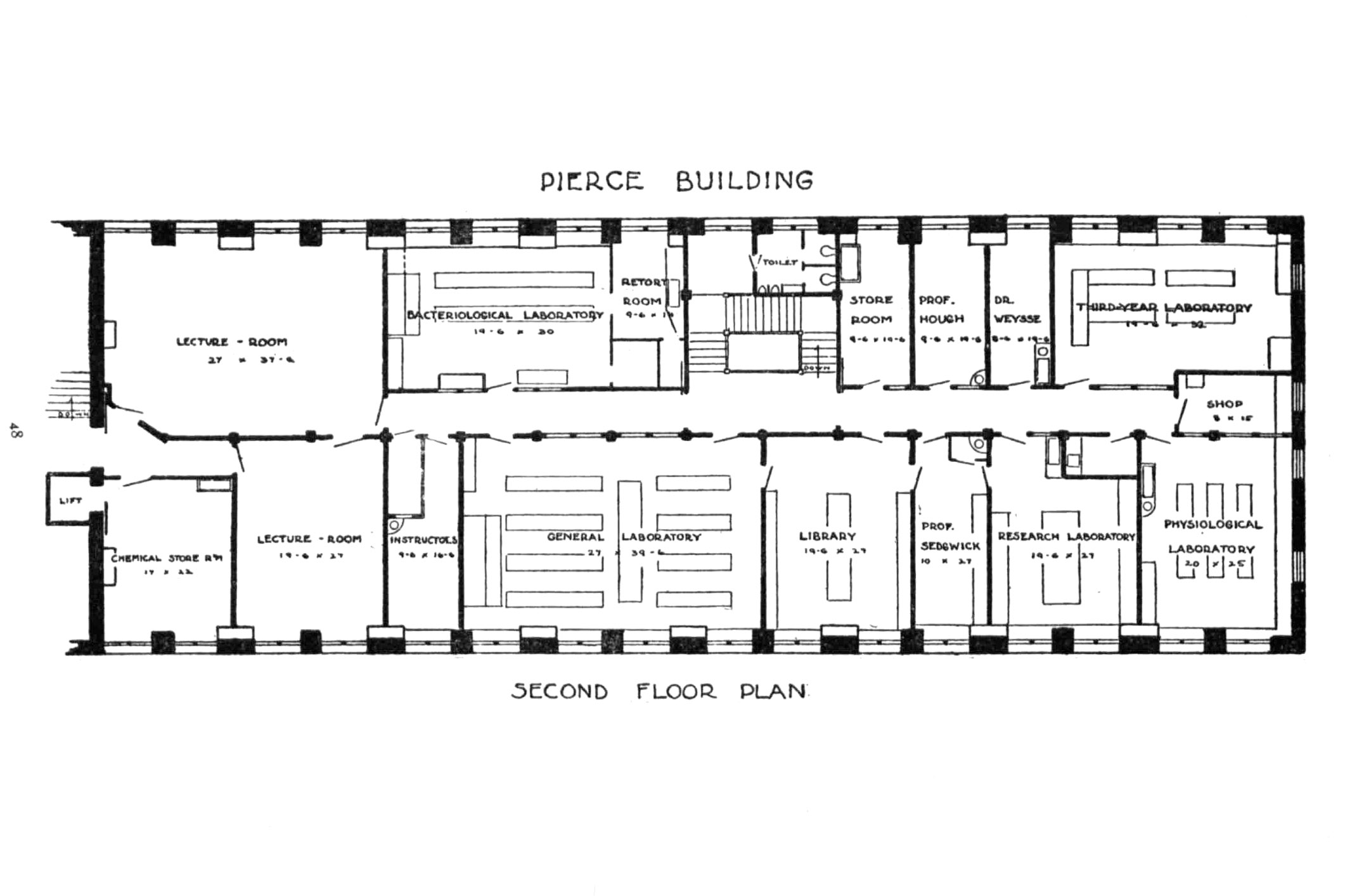
The first issue of the magazine included photos and floor plans of MIT’s new Pierce Building. The floor plans showed the locations of the laboratories so essential to scientists and engineers but rarely provided by universities at the time.
MIT was so impressed by the first two volumes of its alumni magazine that the Corporation’s executive committee voted to cover the cost of expanding the print run and distributing thethird volumeto secondary schools, colleges, and libraries.
“While it is not possible to measure the good resulting therefrom, it is believed that these copies are thoroughly and widely read by the many young men, their teachers and other elders to whom the Institute is thus, in this dignified way, presented,” reported Munroe in December 1902. He also noted a high subscription renewal rate of more than 87%.
On December 31, 1902, Munroe wrote to Mrs. Rogers on behalf of the publication committee: “Your generosity, therefore, has at last borne fruit and, I am convinced, very abundantly; for in many more ways than we can measure, the ‘Review’ is helping and, we have every reason to believe, will continue to benefit, the Institute, by making it better known, by bringing its Alumni more closely to it, by urging and sustaining policies which will more and more carry it forward towards the splendid ideas of your beloved husband.” He also noted that he would have felt obliged to return her $500 gift had the project not succeeded.
With the conclusion of Volume V in November 1903, The Technology Review had 1,274 subscribers and was distributing 450 copies to libraries, colleges, and prep schools. Volume V totaled 545 pages—the largest yet—but the publication committee’s annual report warned that its future depended upon advertising and that those revenues might drop.
But the big threat on the horizon was not the lack of advertising—it was a threat to the future of MIT itself.
Rumors of a proposed merger between MIT and Harvard were already being discussed in local newspapers by February 18, 1904, when MIT’s president, Henry Smith Pritchett, appeared before 35 representatives of 28 MIT classes at a special meeting of the Association of Class Secretaries. Pritchett claimed that “so far as he knew, nothing was being done in the matter,” according to minutes of the meeting. The minutes also noted that Pritchett promised those present that he would treat any proposal of a merger in a “fair and impartial way” if it ever came before him. Pritchett wrapped up his remarks in a matter of minutes and left.
It’s unclear whether a single person in the room believed him.
James Munroe was the first to speak. “With all the smoke there must be some fire,” he said. Something of a fixture at MIT, Munroe had been appointed by President Walker as clerk of the faculty shortly after graduating in 1882, becoming MIT’s registrar the following year and its secretary in 1886. He had also served as president of the Alumni Association for eight years, joined the MIT Corporation in 1897, and been on the Review’s Committee on Publication from the beginning. In what the minutes called “a masterly address, full of intense loyalty and feeling,” Munroe recounted MIT’s history, calling it “a pioneer” that had “revolutionized higher education in this country,” and arguing strongly against a merger. (Today Munroe’s name graces one of the entranceways of MIT’s East Campus dorm.)
Next to speak was Professor Allen, another founding member of the Association of Class Secretaries and the publication committee, who recounted the difficulties faced by engineers working on projects run by people with no expertise in science or technology. Allen “believed that the Institute was extremely fortunate in having no connection with any university,” the minutes read, as “the policy of such schools was largely controlled or influenced by men not engaged in scientific or technical work.”
Eleven more people spoke against the merger at the meeting, including MIT’s first dean of the faculty, Alfred Edgar Burton, who had taught at the Institute since 1882. Burton (after whom the dorm is named) said that “he fully believed a proposition to unite the two institutions would be made,” according to the minutes. “To him it seemed a question as to whether or not we were willing to accept a bribe. Frequently it is said every man has his price. Are we ready to sacrifice the independence, the spirit and the aims of the Institute for any sum of money, however large?”
Those at the meeting passed a unanimous resolution to send to Pritchett: “RESOLVED that it is the sense of the members present that they are opposed to any plan of union with any other institution which might in any way impair the absolute independence of the Massachusetts Institute of Technology.”
In the months that followed, the Association of Class Secretaries and its quarterly publication became the lead organizers in the campaign against the merger proposed by Harvard president (and former MIT professor) Charles W. Eliot. The April 1904 issue devoted 17 pages to extensive quotes from other publications arguing against it. It also reprinted a March 24 article from the student newspaper, The Tech, stating that the undergraduates of both institutions were opposed to the idea. And it reported that the Northwestern Association of MIT, the Technology Men of Montana, and alumni gathered at a Technology Club dinner in Haverhill, Massachusetts, objected to the merger as well.
On April 27, 1904, the Association of Class Secretaries sent a postcard petition to roughly 3,800 graduates and former students: “We, the undersigned, alumni of the Massachusetts Institute of Technology, respectfully petition the Corporation to entertain no proposition to unite, ally, or associate itself in any way, financial or otherwise, with any other educational body.”
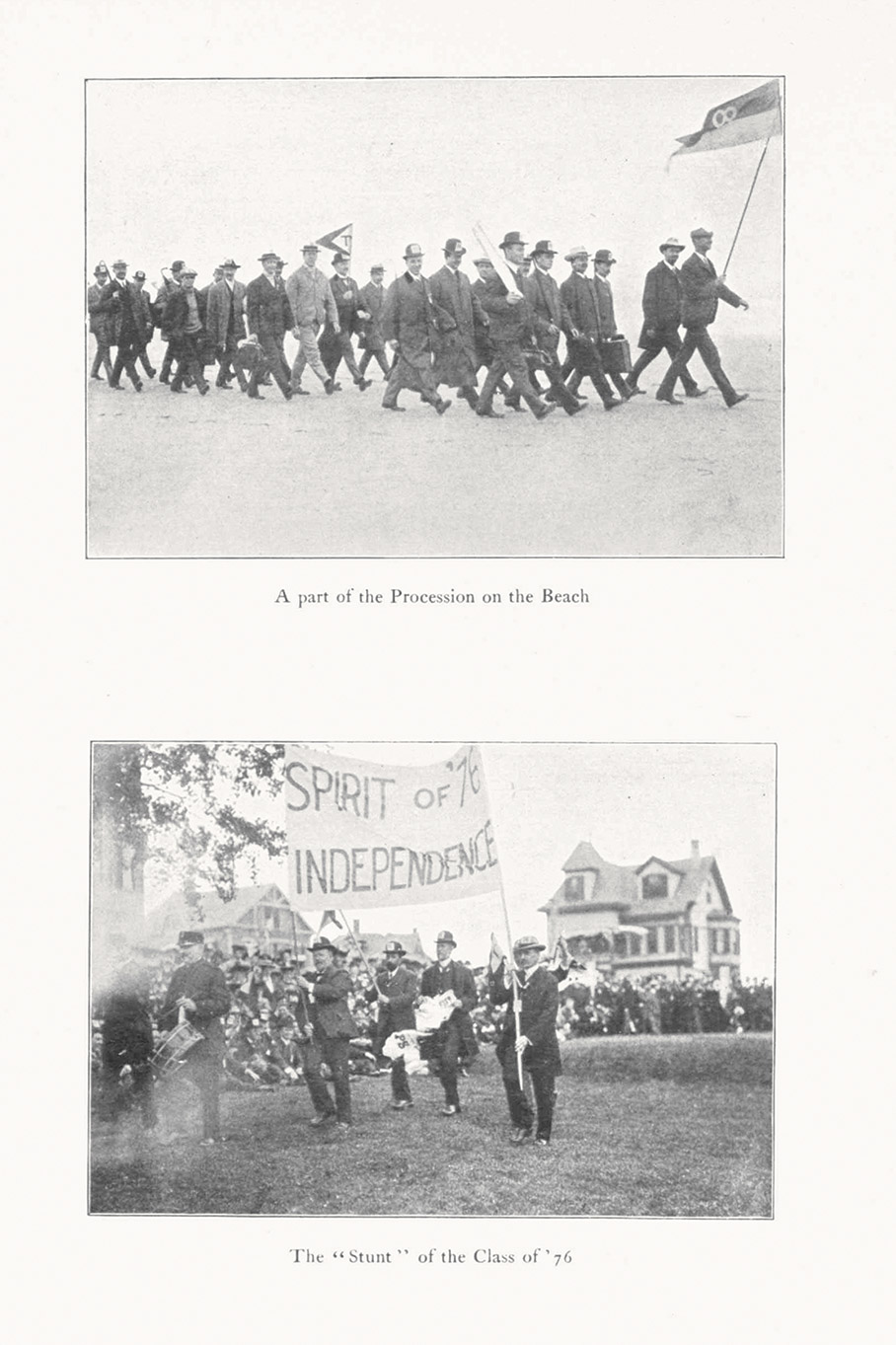
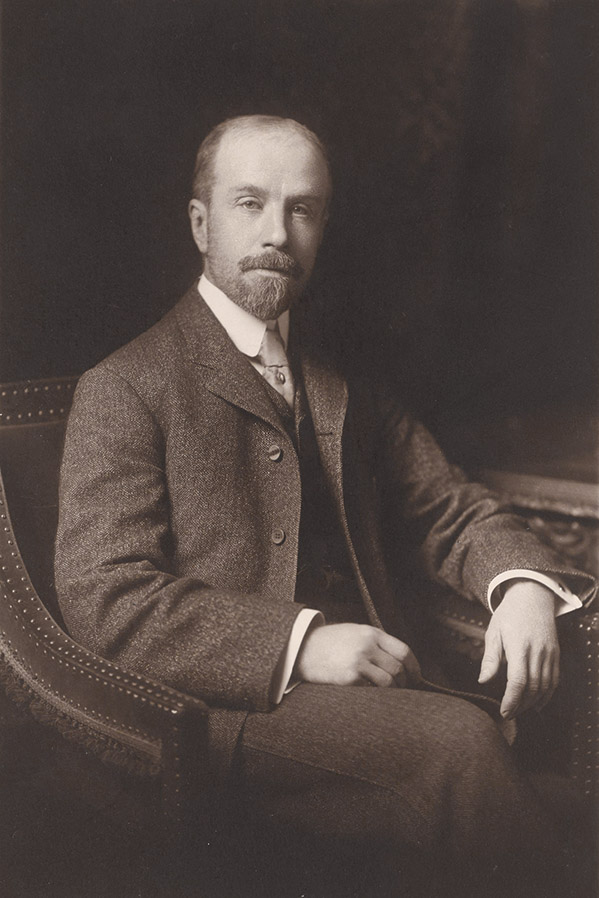
James Munroe, Class of 1882, a stalwart of the Review’s Committee on Publication, argued strongly against a proposed Harvard-MIT merger, and covered the anti-merger sentiment that prevailed at the first Tech Reunion.
Alumni were asked to indicate agreement or disagreement, sign the card, and send it back. But even before petition results were in, the MIT Corporation voted on May 4, 1904, to commence merger discussions with Harvard, which had received a bequest of more than $4 million (nearly $150 million in 2023 dollars) to train engineers from Gordon McKay, a self-taught engineer who’d made a fortune from his business leasing shoemaking machinery.
In June 1904, alumni convened for MIT’s first Tech Reunion. “The graduates came to frolic and to express to one another, as in a caucus, their convictions that Tech will go on to greater glory as the greatest technological school in America entirely without the assistance of the Gordon McKay millions and without any affiliation with Harvard University,” noted the first article of the Review’s July 1904 issue. Many of the Class Notes expressed similar sentiments.
As plans for the merger moved forward, so did opposition from the MIT community. On May 5, 1905, MIT’s faculty voted 56 to 7 against the merger, after which the magazine’s editors mailed a special issue to all alumni containing an account of the meeting and the faculty report explaining why the merger should be opposed.
The July 1905 issue presented the results of the petition. Of the 1,637 responses received by the May 12 deadline, only eight signers indicated that they believed a union of MIT and Harvard “to be desirable.” In a separate MIT Alumni Association poll, anti-merger views also prevailed.
Ultimately the executive bodies of both MIT and Harvard voted in favor of the merger against the overwhelming sentiment of the faculty and alumni. It was simply a matter of economics: MIT had prime real estate in Boston but needed money, and Harvard had the enormous bequest from Gordon McKay to train engineers.
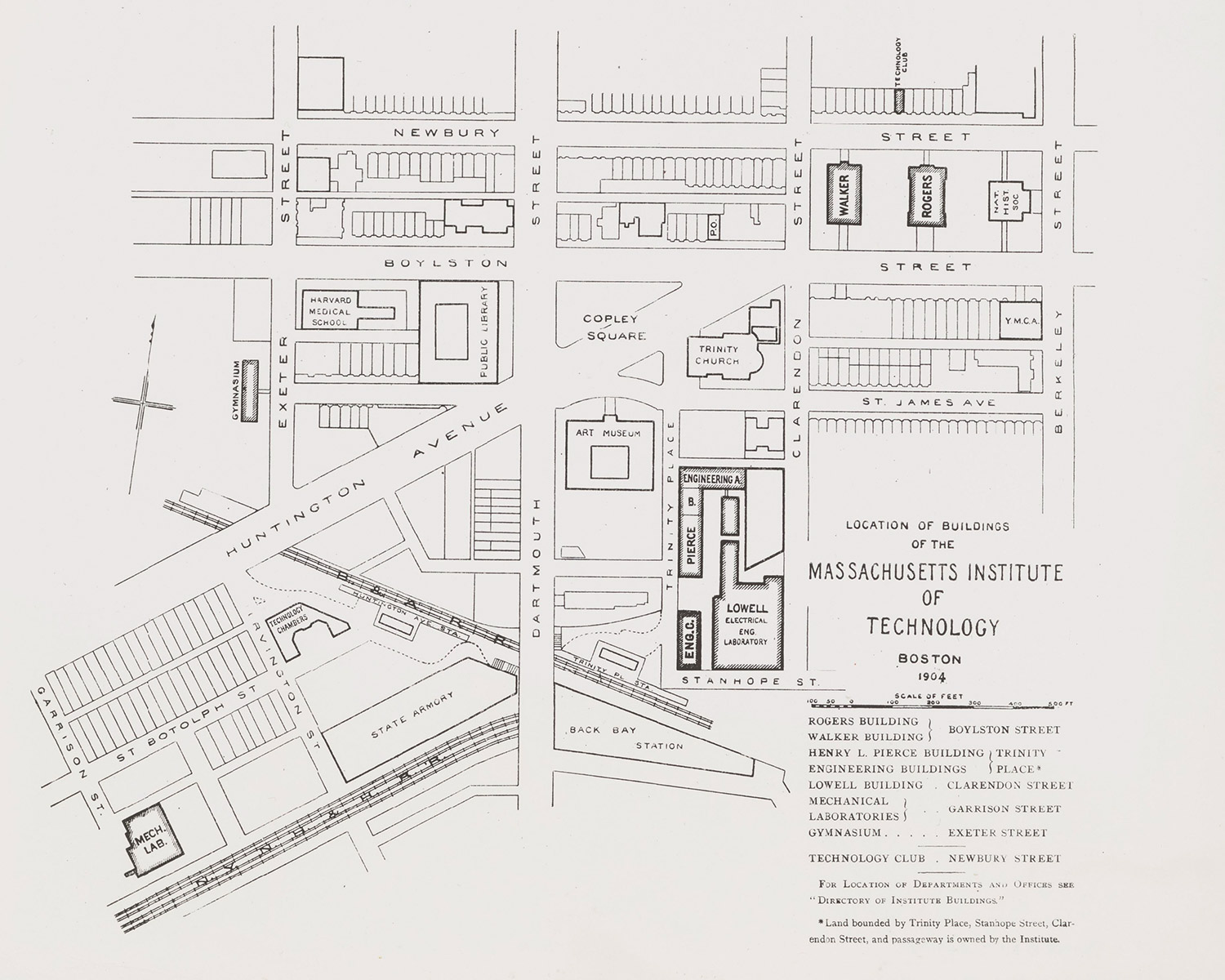
“While the merger was clearly Eliot’s big vision, Pritchett was facing acute—existential, even—financial pressures as well as issues related to the exponential growth of Boston and the Back Bay,” says Deborah Douglas, director of collections and curator of science and technology at the MIT Museum.
MIT couldn’t afford to pay competitive teaching salaries, and it couldn’t raise tuition high enough to cover costs, let alone to provide a residential option for students, meet faculty demand for lab space, or improve graduate education.
“Bottom line: with the McKay bequest, it was not unreasonable to assume that if Harvard built a new school, it would be very easy to attract the MIT faculty to move from Back Bay,” says Douglas. “Entities like the Alumni Association were, as yet, untested in their ability to channel the necessary financial resources needed to remake MIT and retain its independence.”
Thus, it was a great surprise on September 6, 1905, when the Massachusetts Supreme Judicial Court ruled separately in two cases that MIT could not sell its land to Harvard and could not construct additional buildings on its land, effectively scuttling the merger. While this meant that MIT would have to acquire new land in order to expand, at least it had escaped being swallowed up by Harvard. The Technology Review gleefully reported the rulings, reprinting the decisions in full in its October 1905 issue.
MIT had maintained its independence—and the Review would also live on to chronicle how the Institute would ultimately find a new home with room to grow across the river in Cambridge. (See “The Move That Shaped MIT,” MIT News, May/June 2016, and “How MIT Ended Up on Memorial Drive,” MIT News, July/August 2022.)
As the Institute settled into the “New Technology” campus in Cambridge and put the First World War behind it, change was brewing at The Technology Review, which by then had been the official publication of the MIT Alumni Association for more than a decade. “A New Alumni President, A New Alumni Review” announced the July 1922 issue. “HARRY J. CARLSON, ’92, whose first message to the alumni begins on the next page, will have, as the organ of his office and policies, a new ALUMNI REVIEW—at least, one so reorganized that [it] will hardly be recognizable to the readers of the old magazine.”
The new magazine was indeed hardly recognizable. For starters, it was physically bigger, going from a roughly 6-by-9 inch, single-column page size to an 8½-by-11, two-column format, with many photographs. It would now be published eight times a year (up from four in recent years). At the helm would be the Review’s young, energetic new editor: Harold E. Lobdell, Class of 1917.
The Review’s articles still had MIT themes, but many looked far beyond campus. After a four-page interview with MIT’s new president, Samuel Wesley Stratton, the November 1922 edition ran a two-page article describing Stratton’s 20-year run as the founding director of the National Bureau of Standards. Readers were then treated to an account of “Flying through Europe,” a thrilling six-page firsthand report (complete with photos of planes, gliders, and a “forced landing”) by associate professor of aeronautical engineering E.P. Warner, Class of 1917. And there was a three-page profile of the director of the General Electric Research Laboratory, Gerald Swope, Class of 1895—who would become GE’s president by the time the issue was delivered.
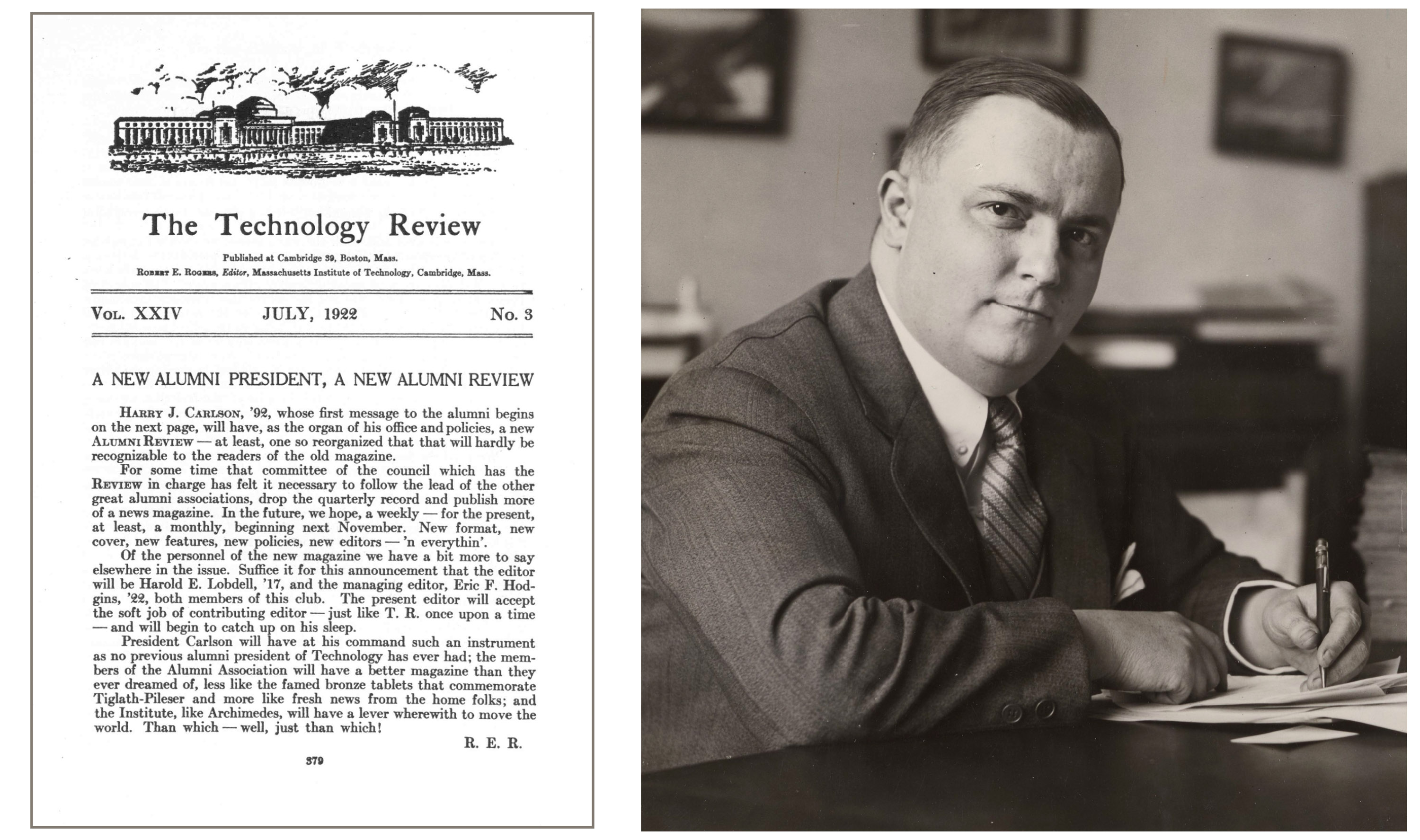
Yet the Review was still clearly an alumni magazine. It included reports of fraternity memberships, news from the classes, and even an account of an early hack: an MIT student had constructed and publicly demonstrated a (fake) perpetual motion machine as a publicity stunt for the undergraduate journal Tech Engineering News. So convincing was the device that it stumped students and professors alike. After the hoax came to light, the Boston Globe reported that another Boston newspaper had been fooled, publishing a photo of it and hailing it as an engineering breakthrough.
In 1922, Lobdell put together what he called “an inventory of The Review as a piece of publishing property” showing that the magazine had: “(1) A circulation list of about 3,500. (2) A goodwill asset supported by the excellent reputation acquired during the 23-1/2 years since its first number appeared in January, 1899. (3) A consistent record for losing money.”
By 1927, however, circulation had more than doubled, the goodwill asset had grown, and the magazine had a five-year track record of operating in the black, thanks in large part to robust support from advertisers, many of whom were alumni. (See “Buy Review.”) In the intervening years Lobdell had transformed The Technology Review into a respected magazine that blended news about MIT and its alumni with coverage about the growing technical world. And with his prescient hiring that year of a new managing editor—one J. Rhyne Killian Jr., Class of 1926, who would soon become editor of the Review and ultimately serve as MIT’s 10th president—Lobdell had paved the way for an even brighter future for both the magazine and MIT.
The first Class Notes
MIT class secretaries have been compiling news of their classmates for 125 years. Here’s a sampling of Class Notes from the first issue of The Technology Review, published in January 1899.
1875
E.S. Dorr, who has been for nearly twenty years with the sewer department in the city of Boston, is at present acting deputy superintendent of sewers … Wm. A. Mason is director of drawing in the public schools of Philadelphia.
1876
Professor Holman’s new book on “Matter and Energy” is just out, and we are able to print a capital review of it on another page. It will be a source of gratification to Professor Holman’s friends that he is able to give us this ripened fruitage of his mind. — Capt. Alfred E. Hunt is being prominently advocated for mayor of Pittsburgh, Pa. He has returned from the seat of war, and is rapidly recovering from the effects of a malarial fever. He was an actor in one of the most dramatic incidents connected with the closing of hostilities in Porto Rico. Hunt, who commanded a company in the cadet corps of the M.I.T. under Zalinski in 1873, and who has ever since been an ardent military man, has for about ten years past been captain of the crack battery of Western Pennsylvania in the State’s “National Guard,” and immediately on the breaking out of hostilities offered his services to the government … It was this Battery B, Pennsylvania Volunteers, which was at the front with General Brooke, and had just been drawn up in line for firing on the Spanish outposts when the messenger bringing the news of the signing of the protocol appeared. This incident was given a double page picture in Harper’s Weekly recently, but unfortunately the artist was some miles in the rear when the incident occurred, and Hunt was sick with malarial fever a few days later, when the artist requested the battery to pose for their photograph, so it is hard to recognize his likeness in the picture. Almost as the messenger arrived, a Mauser bullet passed between Captain Hunt and General Brooke, who were standing near together, and buried itself in a clay bank; this the captain preserves as a souvenir. Five minutes more and the battery would have been in action. Hunt’s dream of a lifetime of being in a real live battle was thus suddenly crushed, and, as he and his associates confess, some of their language for the next few minutes, or days even, would not look well in print.
1881
Frank West Rollins … has written much and well, his published works including “The Ring in the Cliff,” “Break O’ Day Tales,” “The Twin Hussars,” and “The Lady of the Violets,” besides many magazine articles and short stories … In the last election he was made Governor of New Hampshire.
1886
Edward E. Higgins, editor [of] Street Railway Journal, … has the honor of being the first subscriber to The Technology Review.
1887
Fred Thompson was one of two men out of twenty-eight applicants who successfully passed the examination for civil engineer in the United States Navy, and was recently appointed to this office by the President. His rank is that of lieutenant, junior grade, and he has been assigned to the Brooklyn Navy Yard … (Frank) Gelett Burgess, who has not started a new periodical since the collapse of L’Enfant Terrible! last April, is now in London, writing for various English periodicals. He expects to bring out at least three new books next year: “Goop Babies, or, a Manual of Manners for Polite Infants,” a series of verses and original illustrations, … “The Lively City o’ Ligg,” a set of modern fairy tales in which the characters are locomotives, pianos, lamp-posts, etc., … and “Laughing Must I Love Thee,” a novel of California life, whose hero, by the way, is a Technology graduate working in a California railroad surveying party.
1889
The testing laboratory Albert Sauveur has equipped in Boston is particularly adapted for the scientific and accurate chemical and metallurgical work in which he has distinguished himself. Mr. Sauveur edits The Metallurgist, which contains valuable contributions to the scientific literature of his specialties. —George C. Wales has been particularly identified, through his firm of Wales & Holt, with a number of very successful country houses near Boston, though the principal work of his firm has been schoolhouses.
1891
M.W. Greer is on a prospecting tour in Alaska. —At the reorganization of the Norton Iron Co., one of New England’s most prominent iron and steel works, W. B. Douglass was made chief engineer and general manager. The new concern is the New England Structural Co. —Jeremiah Campbell is engineer of a large combination of coal dealers in Boston and has charge of all their barge and steamer interests. —Horace Goodwin has joined the fraternity of bankers and brokers, under the firm name of Goodwin and Thorndike. —H.A. Thompson made the astronomical apparatus taken to Asashi, Japan, by the American College Eclipse Expedition, while apparatus maker for Amherst College. —C.F. Hammond was chief master at arms, U.S. Navy, aboard the U.S.S. Yosemite, during the recent war with Spain.
Keep Reading
Most Popular
Large language models can do jaw-dropping things. But nobody knows exactly why.
And that's a problem. Figuring it out is one of the biggest scientific puzzles of our time and a crucial step towards controlling more powerful future models.
How scientists traced a mysterious covid case back to six toilets
When wastewater surveillance turns into a hunt for a single infected individual, the ethics get tricky.
The problem with plug-in hybrids? Their drivers.
Plug-in hybrids are often sold as a transition to EVs, but new data from Europe shows we’re still underestimating the emissions they produce.
Stay connected
Get the latest updates from
MIT Technology Review
Discover special offers, top stories, upcoming events, and more.